
Well, here we are over a month now stuck at home. Our minds need to find adaptations to this situation to replace the self-care activities we used to do before Covid 19. Most of you had some sort of regular activities you engaged in that kept you from sitting all day binge-watching shows on your computer or television (or in my case wandering around on youtube watching random TED talks and building shows). Those of you that have been coming into the office are showing signs of sitting disease – the dreaded low back issues that come from too much sitting. I have been seeing a number of my neighbors walking the streets with dogs or kids in tow. This is a great way to combat sitting disease, but some people need indoors activities to combat this very common condition. The gyms and Yoga studios are closed, so what can we do?
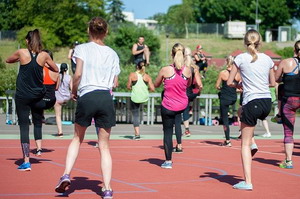
Movement, that is what we are talking about here, movement and contraction of muscles. This is what does not happen while sitting. Why does this matter? Assuming you are not simply looking to impress others with your perfectly toned musculature, the main reason for good muscle tone is to avoid pain. It is an ugly reality, but you can either embrace the discomfort of keeping your muscles strong and balanced, or you get to embrace the pain of degenerated joints. As much as we try to deny it, there is no stable plateau in our health. From age 25 on, our body is in a slow downhill slide into degeneration and failure. Age zero to 25 is our hormone-based automatic growth phase. Age 26 on is our gradual degeneration phase. How fast we slide downhill is all about how much we regularly build and support our system to oppose this slide.
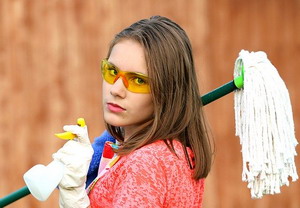
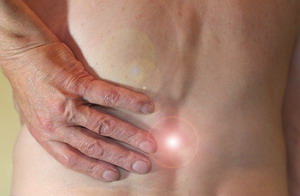
I have written a pile of articles about eating styles that support our health. Today I want to look at what we can do to move our bodies while at home during this unplanned stay-at-home vacation. I have been hearing from some of you that this has been a great time to clean out the garage, clean the closets, and start a garden. If it gets you to move, then it is good. If cleaning up means sitting for hours going through old tax records or family albums, then it’s not good. Sitting more than 20 to 30 minutes is bad for the back. Why is that? The spine has a specific shape – a double S curve – that provides both flexibility and strength to the body and spinal cord nerves. When we have good posture and we are standing, this minimizes the strain on the muscles and spinal joints. The weight of the body is largely supported by the strength of the muscles wrapping around the body at different angles squeezing our innards inward and up. This relieves the downward pressure of the bodyweight on the spinal joints. When we sit, these muscles gradually relax and allow the full weight of the body to compress the spinal discs and joints. The more they get squeezed together, the more wear and tear they experience. Over time this wear and tear becomes degenerative joint disease. This is the health reason we want to have tight abs and good posture – to prevent degenerative joint disease, what most people call arthritis. The pain associated with this process comes on gradually, but the muscular imbalance producing usually gives us plenty of warning signs along the way with brief bouts of pain caused by the joints pinching the tender tissues and nerves. These episodes are what usually bring folks into my office.
The key to slowing this degeneration stuff down is the combination of muscle strength/tone, flexibility, and muscle balance. Loss of these are the prime reasons for disability as we age. You have to have the strength to get up and move, and you have to have the balance to stay upright as well as keep the joints lined up properly so they don’t pinch. The only way to make this happen is to move in ways that stress the muscles so they stay strong and to move in ways that challenge your balance. Being safe and comfortable all the time is the fastest way to degenerated joints. Another way of looking at this is understanding that our comfort zone constantly shrinks if we don’t push limits out a bit constantly to counteract this shrinkage. So what does this look like?

Balance: constantly challenge your balance. Stand on one foot with your eyes closed for as long as you can every day. Start next to a wall or counter so you can catch yourself in the beginning. Fifteen seconds is a very good balance goal. Practice putting your socks on standing up. Try squatting down to pick things up off the floor instead of bending over at the waist. Try walking heel to toe. While standing on one foot, eyes open, move the other leg in all directions. When you are ready for greater challenges, use a stability cushion, wobble board, or rocker board. Sit on a big therapy ball and bounce/rock around. Always make sure that you have soft stuff to land on in case you don’t stay balanced, because if you are certain you can’t fall, then the challenge is not great enough to benefit from.

Flexibility: Yoga is a master teacher of flexibility, so watch yoga examples on the TV or computer to get how to stretch. Just sitting on the edge of your bed and flopping forward bringing your head as close to your lap and relaxing for 30 seconds is a simple place to start. Do big circles with your arms forward and backward. Stick your arms out and twist at your waist right and left as far as you can. In bed, roll on your tummy and lift your arms, legs, and head back as far as you can for as long as you can.
Here is a nice simple set of stretches on youtube. The floor stuff you can easily adapt to doing on your bed instead of the floor to make getting there easier.

Strength: The gyms are closed, so pumping iron with the big boys is harder to do. Most of us do not have weight racks at home so we need different ways to build strength while at home. My personal favorite way is through super slow exercises. Ellen and I do super slow squats (I hold Ellen’s hands to aid her balance) every Saturday morning, and regular speed squats all other days. I throw in super slow push-ups as well on Saturday. Super slow means we take 10 seconds to go down into the squat and 10 seconds to come back up, and then instantly start back down again. This continuous motion continues until we can’t move anymore – exhaustion is reached. It is this point of exhaustion that tells the body we want to build muscle. If you don’t push your limits, you don’t grow.

We do lots of other regular types of traditional exercises like sit-ups, rows, resistance exercises for every arm movement possible, all while sitting on the bed. I supply the resistance for Ellen, or we use stretch tubing for resistance. Ellen’s trainer, Toni, made this simple exercise unit for her to attach stretch tubing to so she can work out. I also just ordered a three direction vibration plate for us to work out with which will multiply the impact of our workouts greatly. I was impressed with how much the price has come down on these plates. They were several thousand dollars a couple of years ago. Now they are only $399. Here is the link to my equipment page.
I don’t have room in my house for a bunch of exercise equipment, but we can get a bit of an aerobic workout with a little elliptical trainer designed to fit under a desk. You can pull it out and stand on it as well to work out.
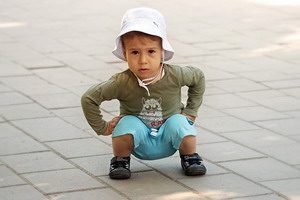
My favorite workout exercise is something called an Hindu Squat. It is hard to describe, but easy to do, so here is a link to a video of this great exercise. I always focus on this exercise because maintaining leg strength is key to staying functional as we age. It can be adapted to almost anyone by simply keeping the amount of squat depth to a level you can accomplish with 10 to 20 squats.
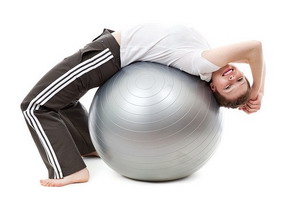
If you have the room, I highly recommend working out on a big therapy ball doing planks or just plain bouncing. If you have a mini trampoline, put on some music and start bouncing. There is so much we can do at home to get the exercise we need to fight the dreaded Sitting Disease. The more fun you can make the activity the better it will work for you. Move it, move it, move it.
Take care,
David
